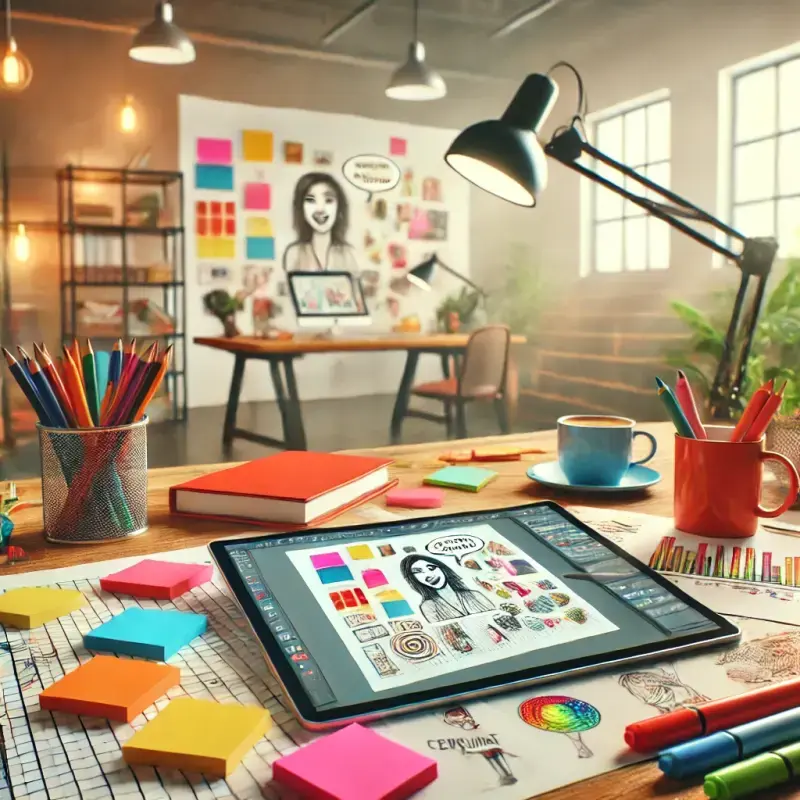How to Train Creative Thinking Through Meme Creation: Unconventional Learning Approaches

In today’s fast-paced digital world, creativity has become a valuable skill across all industries. While traditional approaches to fostering creativity have their merits, unconventional methods like meme creation offer an exciting and effective alternative. Memes, though often dismissed as simple internet humor, require wit, design skills, and a deep understanding of cultural trends. This article delves into how the process of crafting memes can train creative thinking and become a powerful educational tool.
Why Memes? The Unique Value of Meme Creation
Memes are more than just entertainment; they are a cultural phenomenon. Crafting a successful meme involves a blend of humor, timing, and relevance. This process can help develop several core skills:
Abstract Thinking: Memes often rely on metaphors, puns, and abstract associations, which stimulate the brain to think outside the box.
Cultural Awareness: Understanding trends and societal dynamics is essential to making memes relatable and effective.
Visual Communication: Memes combine imagery and text to convey messages succinctly, enhancing design and communication skills.
Problem-Solving: Turning a concept into a meme requires innovative thinking to express an idea in a compact and humorous way.
Step 1: Understand the Elements of a Meme
Before diving into creation, familiarize yourself with the basic components of a meme:
Template: The background image or structure sets the tone and context. For example, popular templates like the “Distracted Boyfriend” provide familiar setups for humor.
Caption: Text provides the narrative, often adding irony or humor.
Timing: Memes gain traction when they are topical and relevant.
Spend time exploring platforms like Reddit, Instagram, or Pinterest to study trending memes and identify common patterns.
Step 2: Start With Simple Exercises
If you're new to memes, begin with straightforward exercises to warm up your creative muscles.
1. Remix Existing Templates
Choose a popular meme format and apply it to a niche topic of interest. For instance, take the “Change My Mind” template and use it to convey a playful opinion on your favorite hobby or subject.
2. Word Association Games
Brainstorm humorous connections between unrelated ideas, then visualize them as memes. This practice strengthens your ability to think laterally.
3. Combine Opposites
Mix highbrow and lowbrow concepts to create unexpected humor. For example, juxtaposing scientific jargon with an everyday scenario can result in an amusing and thought-provoking meme.
Step 3: Advance to Original Concepts
Once you’re comfortable with existing formats, push your creativity further by designing original memes.
1. Create Your Own Templates
Sketch or photograph unique scenarios that could serve as meme backdrops. Ensure they are open-ended and versatile for various captions.
2. Experiment With Styles
Try different approaches, such as minimalism, surrealism, or parody, to diversify your meme creations.
3. Test and Refine
Share your memes within small groups or online communities to gather feedback. Use their reactions to tweak and improve your work.
Step 4: Integrate Memes Into Learning and Problem-Solving
Meme creation is not just about entertainment; it can be a valuable tool in education and professional development.
1. Brainstorming Sessions
Use memes to summarize ideas during brainstorming. Their compact format forces clarity and simplicity.
2. Learning Complex Topics
Memes can help distill complicated concepts into digestible pieces. For example, creating a meme about a historical event can help reinforce key points in a memorable way.
3. Team-Building Activities
Incorporate meme-making into workshops or team-building exercises to foster collaboration and a lighthearted atmosphere.
Overcoming Challenges
Like any creative endeavor, meme creation has its obstacles. Here’s how to tackle them:
1. Creative Blocks
If ideas aren’t flowing, take a break and consume fresh content. Inspiration often strikes when you least expect it.
2. Staying Relevant
Memes can become outdated quickly. To stay ahead, follow social media trends and explore diverse topics.
3. Balancing Humor and Sensitivity
Avoid humor that could be misunderstood or offensive. Aim for inclusivity and universal appeal.
The benefits of meme creation extend beyond individual skill development. Memes serve as a universal language, bridging cultural and linguistic gaps. By engaging in this creative process, you’re not only refining your artistic and critical thinking skills but also contributing to global conversations in unique and relatable ways. Furthermore, meme-making encourages adaptability—a critical skill in today’s ever-changing world. As trends evolve, the ability to innovate quickly and stay relevant enhances your creative agility, making you better equipped for future challenges.
Conclusion
Meme creation offers a playful yet impactful way to train creative thinking. By blending humor, design, and cultural awareness, this unconventional method fosters innovation and problem-solving skills. Whether used for personal development, education, or team-building, memes have the potential to unlock new dimensions of creativity. So grab a blank template, let your imagination run wild, and start crafting memes that not only entertain but also inspire growth.
Articles
Inscrivez-vous à nos alertes pour recevoir nos dernières publications directement dans votre e-mail.